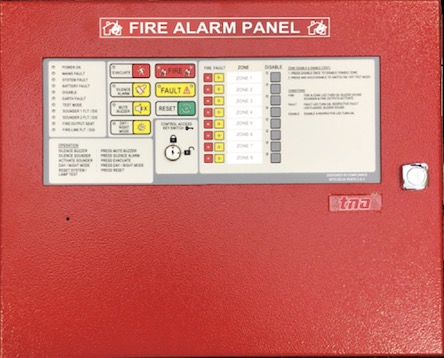Copyright © 2021TANDA Development Pte. Ltd. All rights reserved.Privacy Policy.Site MapDesigned by

If a fire ever starts, every second will be crucial. Evacuating everyone as soon as you can, is the greatest method to guarantee their safety. And to do that, you need a technique that will instantly spread the information to everyone.
The alarms will go off as soon as it notices a probable fire to make sure everyone is informed. It's also perfect for use in a variety of settings. The traditional fire alarm system is perfect for small businesses and offices, as well as for schools and other forms of rented housing.
You can use this article as a reference for traditional fire alarm system information.
The instructions are as follows:
The center of the entire fire alarm system is the control panel. The panel serves as the main conduit for system communication. When a threat is detected, a detector sends a signal right here.
All of the system's sounders, bells, and beacons will then go off as a result. Users and engineers can use it to monitor the system. So this is your first point of contact once a problem arises or the alarms are sounding to completely comprehend the situation.
Your fire alarm system can serve various purposes using alert inputs, making it multifunctional. This enables you to notify everyone of a change in class or for other purposes by using the bells and sounders. Just make sure everyone is aware of what the various sounds imply.

There should be a detector in every room. These battery-powered alarms feature optical, ionization, and heat sensors, just like conventional battery-powered alarms.
This enables you to select the detector that is best for the situation. Having detectors in every room increases the likelihood of seeing a fire as soon as it starts. Additionally, there should be at least one call point in each zone.
This is due to the possibility that a fire or smoke could be discovered before the detector. Because the alarm is raised manually, everyone can respond much faster than they otherwise would have.
You need a way to immediately alert everyone. People need to pay attention, and there should be no justification for them not to be alert. Bells provide a more conventional sound, while sounders provide a strong and recognizable auditory alarm.
In any case, they will make sure that everyone receives the message so they can act. It's best to do a fire drill periodically. That means everyone will become accustomed to the sound and understand what to do when the alarms go off.
You need wiring linking it all together for the system to truly function. You must use fire-rated cables, though. This guarantees that they can withstand fire and continue to function when you need them most.
They increase the likelihood that your fire alarm system will function properly. Different wires are better than others at withstanding fire. Additionally, the cable must be properly secured to avoid damage.
You cannot afford for your fire alarm system to stop when there is a power outage and the lights go out. You ought to have a battery backup in your control panel because of this.
Batteries will keep the entire fire alarm system operational, and if the power is restored and operational again, the control panel will recharge the batteries. Additionally, these batteries are low maintenance and have a long lifespan.
Batteries will therefore contribute to everyone's safety regardless of what occurs. You may make sure that the sirens continue to ring even if a fire interrupts the power supply.
All of these components work together to create a fire alarm system that is dependable and strong enough to tackle any difficulty.
Contact us for help with your conventional fire alarm system and additional details.